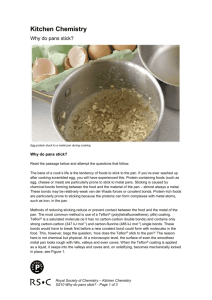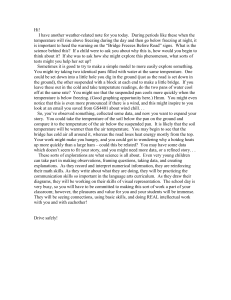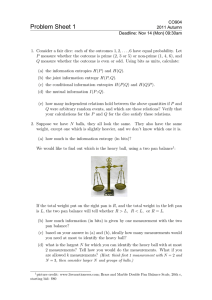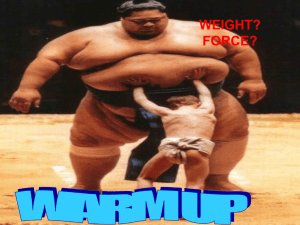h i Chemistry W
advertisement
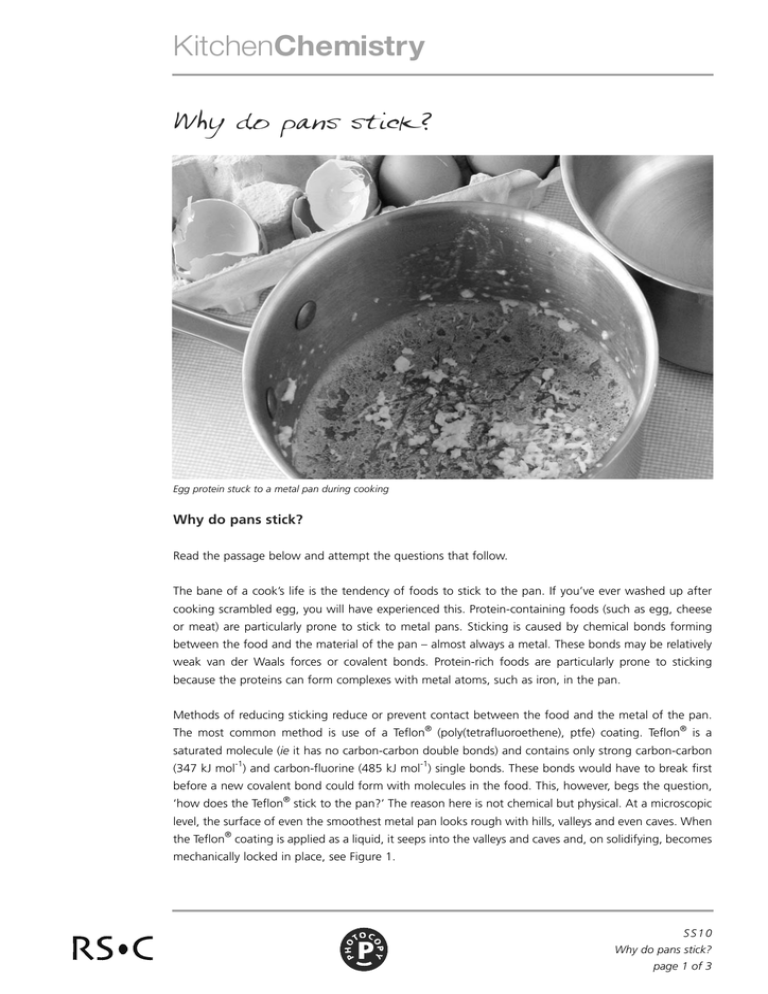
KitchenChemistry Why do pan s s tick? Egg protein stuck to a metal pan during cooking Why do pans stick? Read the passage below and attempt the questions that follow. The bane of a cook’s life is the tendency of foods to stick to the pan. If you’ve ever washed up after cooking scrambled egg, you will have experienced this. Protein-containing foods (such as egg, cheese or meat) are particularly prone to stick to metal pans. Sticking is caused by chemical bonds forming between the food and the material of the pan – almost always a metal. These bonds may be relatively weak van der Waals forces or covalent bonds. Protein-rich foods are particularly prone to sticking because the proteins can form complexes with metal atoms, such as iron, in the pan. Methods of reducing sticking reduce or prevent contact between the food and the metal of the pan. The most common method is use of a Teflon® (poly(tetrafluoroethene), ptfe) coating. Teflon® is a saturated molecule (ie it has no carbon-carbon double bonds) and contains only strong carbon-carbon (347 kJ mol-1) and carbon-fluorine (485 kJ mol-1) single bonds. These bonds would have to break first before a new covalent bond could form with molecules in the food. This, however, begs the question, ‘how does the Teflon® stick to the pan?’ The reason here is not chemical but physical. At a microscopic level, the surface of even the smoothest metal pan looks rough with hills, valleys and even caves. When the Teflon® coating is applied as a liquid, it seeps into the valleys and caves and, on solidifying, becomes mechanically locked in place, see Figure 1. SS10 Why do pans stick? page 1 of 3 Teflon® non-stick coating Metal surface of pan Figure 1 The surface of a Teflon® coated pan Modern hard-wearing Teflon® coatings are applied after first roughening the surface of the pan to aid this process. Before non-stick pans were developed, good cooks could still avoid sticking. One simple way to do this is just to keep the food moving so that it is never in contact with the pan long enough for chemical bonds to form. Eventually the proteins on the surface of the food will have got hot enough to react with something else, after which sticking is not a problem. This is what happens when meat browns, for example. Another method is to heat some oil in the pan before cooking. The oil, being liquid, fills in the valleys and caves of the pan surface and when it gets hot it reacts with the metal atoms of the pan and forms a coating called a patina. This leaves few free metal atoms to react with the food. This coating can easily be removed by detergents, however, so it has to be reapplied before each use of the pan. It has been suggested that the patina could form by a sequence of cracking followed by polymerisation as described below. Fats and oils are esters of the triol propane-1,2,3-triol (glycerol) and long chain fatty acids such as octadecanoic acid (stearic acid, C17H35COOH). At the high temperatures reached in a frying pan the hydrocarbon chains of these acids could crack (in the same way as the long hydrocarbon chains in crude oil fractions are cracked) to produce two shorter chains, one of which has a carbon-carbon double bond, ie is an alkene. Such alkenes would be expected to polymerise under suitable conditions to SS10 Why do pans stick? page 2 of 3 produce a polymer of much greater chain length than the original fatty acids. This is similar to the polymerisation of ethene to poly(ethene). Such a polymer would have a high relative molecular mass and would be solid even at frying temperatures. R n R’ C C R R’ C C n H H H H Questions 1. Draw the structural formula of a fat or oil. 2. Write an equation for the cracking of octadecanoic acid. Name two fragments that could be formed. Why are there several possibilities for these fragments? 3. What sort of polymerisation takes pace when alkenes link together? 4. The three main food groups are fats/oils, carbohydrates and proteins, all of which are relatively large molecules. Draw the structural formula of a section of each of these types of food molecules. What reactive groups does each have? Suggest how a protein might react with a metal atom. Which food type has the biggest variety of potentially reactive groups? Which has the fewest reactive groups? 5. List the three types of intermolecular forces and briefly describe how each comes about. 6. What type of reactions can take place at carbon-carbon double bonds? The strength of a carboncarbon double bond is 612 kJ mol-1 yet it is more likely to be involved in reactions than the carboncarbon single bond (347 kJ mol-1) and the carbon-fluorine bond (485 kJ mol-1). Explain this apparent paradox. 7. Explain what is meant by a ‘saturated’ molecule. SS10 Why do pans stick? page 3 of 3
